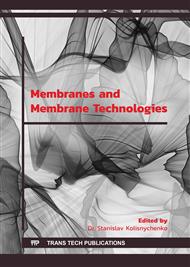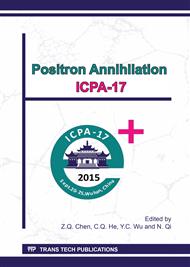p.237
p.241
p.245
p.249
p.257
p.261
p.265
p.269
p.274
Characterization of Polysulfone/TiO2 Composite Membrane Modified by Plasma
Abstract:
In order to enhance the surface anti-fouling property of separation membrane, TiO2/polysulfone (PSF) membrane was prepared by the phase inversion method, and the surface was treated by oxygen plasma to obtain a composite membrane with photo catalysis activity. To evaluate the effect of oxygen plasma on the surface modification, positron annihilation γ-ray spectroscopy coupled with a positron beam was utilized to probe the surface feature, while the catalysis evaluation system was employed to study the anti-fouling activity of the membrane. The results indicate that with increasing plasma treatment time, the membrane exhibits higher S parameter in the lower energies, while the photo catalysis activity is strengthened. It can be concluded that plasma technique can improve the photo catalysis activity of the composite membrane.
Info:
Periodical:
Pages:
257-260
Citation:
Online since:
March 2017
Price:
Сopyright:
© 2016 Trans Tech Publications Ltd. All Rights Reserved
Share:
Citation:



